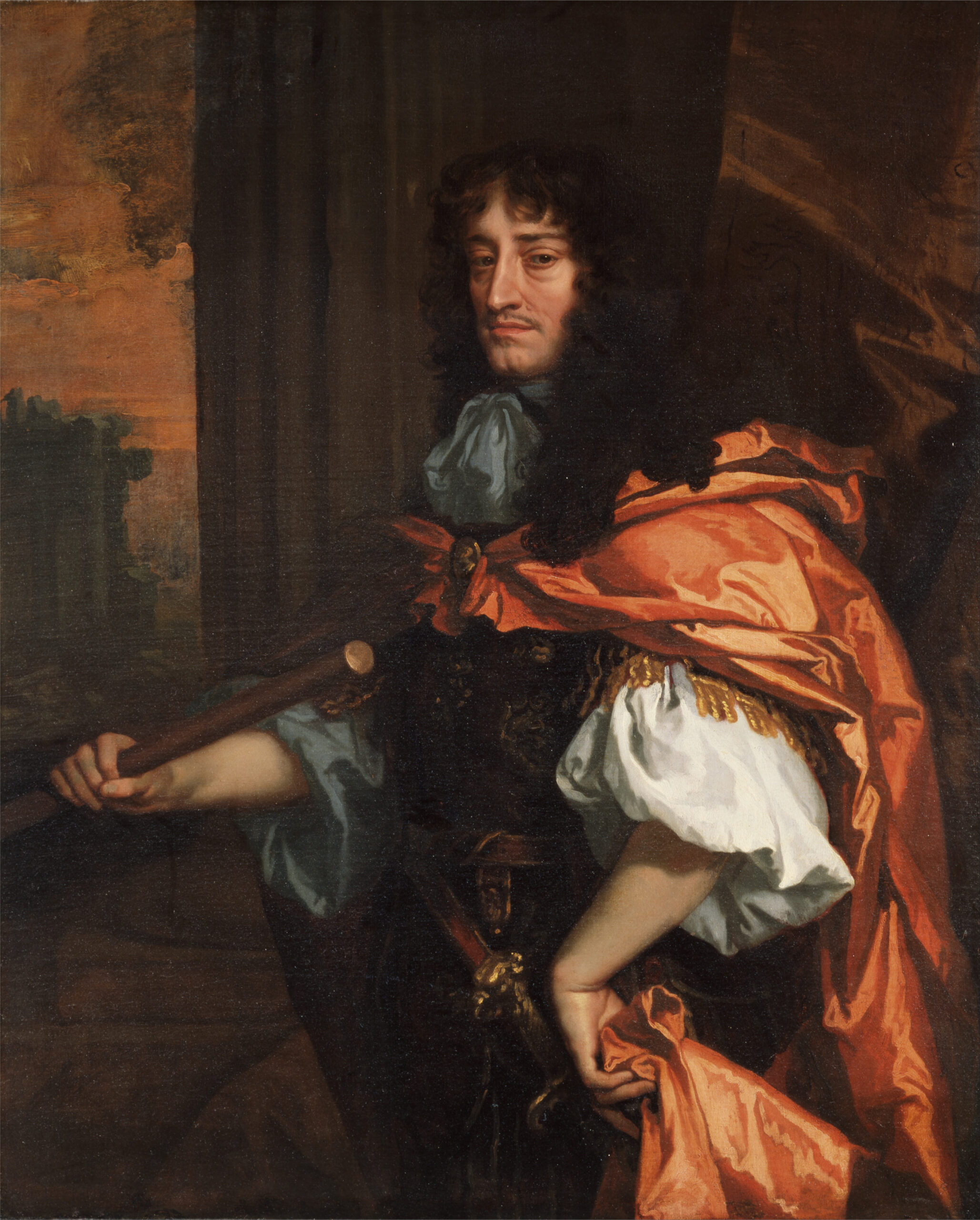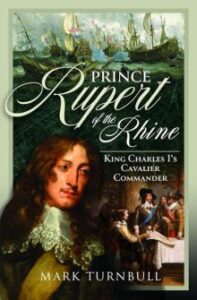Historical Heroes: Prince Rupert of the Rhine
Though this is an article about Rupert as a historical hero, I should, ironically, start by pointing out that he is also considered to be a historical villain! In his heyday enemy propaganda named him ‘Prince Robber’ or ‘The Diabolical Cavalier’. There were at least eight other pseudonyms. Yet, I would hazard a guess that this very practical man would not have been particularly concerned about how he was remembered. The fact he remains such a polarising figure, that he still endures in historical study, and moreover is a recognisable and popular subject, has much to do with his character, tragedies, and creativity.
Rupert is a very human hero. He was short-tempered, arrogant, and ruthless, yet kind, principled, and loyal. The flaws attract us just as much as the finer points and present a rather balanced character. As a result, despite the passing centuries, this gives us a closer sense of him – perhaps even enough to make us feel we can relate to him on a basic human level. He has much akin with the late Prince Philip, Duke of Edinburgh. Both grew up as exiles without a home, had oodles of energy and determination, were drawn to the military, and there excelled, before settling in Britain (or England in Rupert’s case). Both men were driven and austere, with innately curious minds. They are remembered as much for their blunt speaking as their dedicated service to their adopted country.
Barely one year old when his parents were driven from Bohemia, the throne of which they had accepted just two years earlier, Rupert grew up as an exile with a large chip on his shoulder. He had to prove himself and mitigate the gnawing inferiority that came with his family’s situation. As royals without a realm, a military career was a natural option for Rupert and it was one he relished, showing aptitude from a young age. But tragedy struck early. His eldest brother drowned when Rupert was nine years old. At the age of 13, his father died while attempting to regain their ancestral lands. Six years later, Rupert was captured by Catholic forces of the Holy Roman Emperor and suffered close imprisonment for three years. When civil war broke out in King Charles I’s kingdoms, Rupert dedicated himself to his uncle’s cause. He courageously battled parliamentarians, dodged bullets, and emerged unscathed from many perilous predicaments, all of which gave him a legendary reputation. Taking that conflict to sea, he led a small fleet to Ireland, Portugal, the Azores, and West Indies in a desperate bid to keep the royalist flag flying. It required guts, determination, and willpower to survive these gruelling voyages. When his flagship foundered, Rupert would have gone down with the vessel had his men not forced him to leave. His beloved brother Maurice, however, would be lost to a storm shortly afterwards. These actions inspire admiration and respect even from his enemies. Moreover, they foster a romanticism that surrounds Rupert to this day.
But character and tragedies aside, his creative achievements span so many aspects of what makes the seventeenth century so pivotal. Rupert left his mark in such a variety of fields that he is woven into the very fabric of his century.
In the world of art, the prince developed mezzotint engraving, working from dark to light, which was opposite to the norm. He introduced this method to England after the restoration of the monarchy and his own pieces are testament to his talent. They include works that portrayed Mary Magdalen, the executioner with the head of John the Baptist, and a military standard bearer. However, he loved capturing images of everyday people going about their business. These range from a peasant carrying a bag, another with a stick and reed basket, a beggar with a staff and rosary, and a boy holding a basket of fish. They fit entirely with Rupert’s happiness to mix with ordinary people, especially those with trades and skills that attracted his curiosity, and from whom he might learn. It is easy to imagine how this creativity eased his tormented mind. During Rupert’s youthful spell in captivity at Linz, in Austria, he also developed an instrument that assisted drawing in perspective.
A Fellow of the Royal Society and amateur scientist, he concocted numerous potions and lotions. Anything from an ointment to heal a flux of the blood, burns, or fresh wounds, to special ‘drops’ which he sent to his sisters to benefit their health. When he underwent (several times) the gruesome process of trepanning, where a hole was drilled into his skull to release corrupt matter, he designed instruments that might improve the process. Other inventions ranged from permanently colouring marble, developing a means to measure altitude at sea, a method of blowing up rocks to assist with mining, and an application that could help heal an incision to a pig’s gut. An accidental discovery in his forge became known as ‘Prince Rupert’s drops’. Molten glass dripped into water created tadpole shaped ‘drops’ and the heads, Rupert found, were as strong as could be. Yet, if the thin tails were pressured the whole thing would shatter.
There was also military engineering. Rupert searched for an advancement that might give the three kingdoms an advantage in war and encouraged others to do so. He tested a wooden frame that fitted around a ship’s hull for added protection that might make it ‘cannon-proof’. Ideas were explored for all sorts of fireworks that might be shot from naval ordnance like an ordinary bullet. There was a noiseless musket. But the most important project by far was his guns – ordnance reportedly created by casting iron to calibres that would make them lighter, cheaper, and more manoeuvrable. He took oaths of secrecy from all involved, so serious was the potential.
His efforts to benefit Britain were not just martial. In trade and exploration, he pushed for an expedition to investigate rumoured mountains of gold near the River Gambia and was a shareholder in the Company of Royal Adventurers Trading into Africa. After funding an expedition to what we know today as Canada, the prince became governor of the Hudson Bay Company, which subsequently created new trade routes. The area where the company was established was named Prince Rupert’s Land in his honour.
Dependable, and crucially Protestant, Rupert’s presence in the Restoration’s political arena was reassuring in view of the Duke of York’s Catholicism and King Charles II’s flirtation with it. Rupert was a competent senior commander of the fleet during the Anglo-Dutch wars, eventually being promoted to Vice-Admiral of England, and his bravery earned him much applause. Though the prince was loyal to his cousins, the King and Duke of York, his royal status and religion meant he could bridge the gap between the monarchy and its opponents, including, for example, the Earl of Shaftesbury. Rupert even became great friends with the latter, despite Shaftesbury’s attempts to bar the Duke of York from the succession.
The missing part to Rupert’s story is the women in his life. Branded ‘mistresses’, they have been side-lined to a couple of generic paragraphs that have told us little about them, and even less about their relationship with the prince. The most exciting aspect of writing my biography of Rupert was to dig into archives and reveal more details than ever before about Lady Katherine Scott, Frances Bard, and Margaret Hughes.
In the darkest days of the civil war, with King Charles I’s crown on the line and the royalists on the back foot, Rupert found himself fighting his parliamentarian enemies and contending with backstabbing royalist courtiers. Being a poor politician – too bluntly honest for his own good – the prince lacked the Machiavellian skills he might have employed to fend off these intriguers. Beset on all sides, he briefly sought solace in the company of Lady Katherine Scott, and rumour had it she gave birth to his love child around 1645 or 1646. Katherine’s is an extraordinary story, revealed through much new evidence that takes us to the heart of it. Although married, she lived apart from her husband, therefore her pregnancy risked everything. As the civil war came to an end, she fled royalist Oxford and barricaded herself into one of her husband’s homes, whereupon a siege ensued to starve her out. Soon afterwards, she was faced with public divorce proceedings, which denigrated her character. Her son, shrouded in mystery, was later knighted, and became an officer of Charles II’s lifeguard.
Frances Bard and Rupert struck up a relationship around 1664. He was over twenty years her senior and though they had a son together two years later, they soon parted ways. A Catholic convert, Frances scandalised society in later life by attempting to convert her two nieces. She also consistently maintained that Rupert had married her, though he subtly refuted that. Astoundingly, after her death, Frances’ family continued the claim by having it etched into their memorial stone, referring to her as ‘Princess Rupert’.
Rupert, however, found his life partner in Margaret (Peg) Hughes. The prince trusted Peg and involved her in personal matters concerning both his family and his politics. The couple entertained Rupert’s nephew, George Louis (the future King George I) during his visit to England in 1680. Rupert recognised the religious chasm that lay ahead and attempted to breed a Protestant super-heir. He and Peg advanced a match between George and the Duke of York’s daughter, the future Queen Anne, though it was not to be. Peg was one of the first actresses – if not the first – on the stage. Perhaps this led to Elizabeth Polewheele dedicating a comedy (called The Frolicks) to Rupert in which she praised his mind as being ‘so bright and glorious’. The old soldier himself was not averse to taking part in the frivolous side of court life, dressing up as Alexander the Great for one event.
On 20 November 1682, knowing the end was near, Rupert signed his will. Rather fittingly, the last outing of his life came four days later when he made a trip to the theatre. Confined to his red velvet bed at Spring Gardens, his London home, pleurisy took the prince before dawn on 29 November. His had been an adventurous sixty-two years.
Nor is thy Memory here onely crown’d,
But lives in Arts, as well as Arms renown’d;
Though Prideless Thunderer, that stoop’d so low,
To forge the very Bolts thy Arm should throw,
Whilst the same Eyes Great Rupert did admire
Shining in Fields, and sooty at the Fire:
Perceiving thee advanc’d in feats of Arms so far,
At once the Mars and Vulcan of the War,
Till Dancing Cyclops shall thy praise repeat,
And on their Anvils thy tun’d Glories beat.
Mark Turnbull is a historian and author of Charles I’s Private Life and Prince Rupert of the Rhine: King Charles I’s Cavalier Commander.







